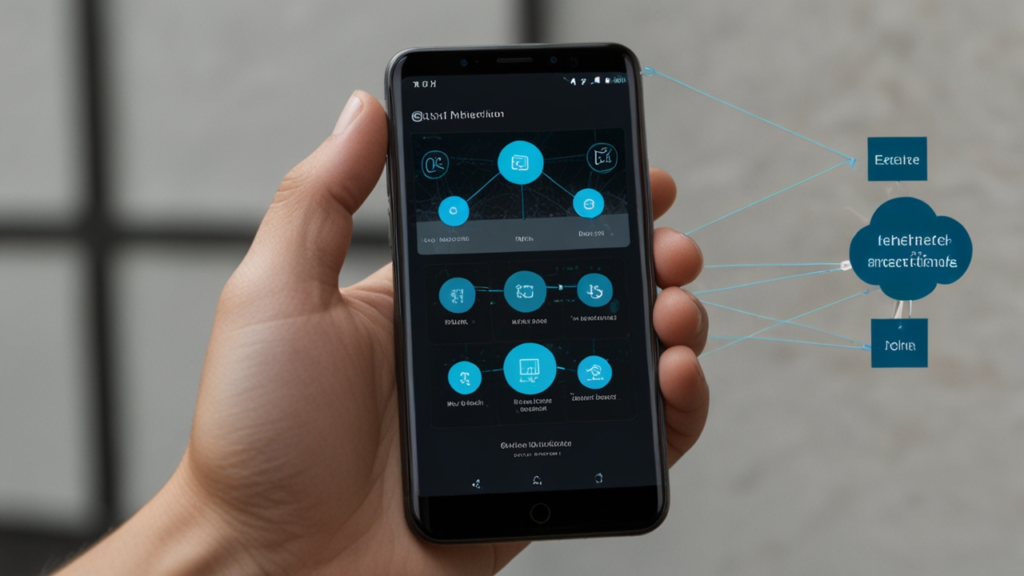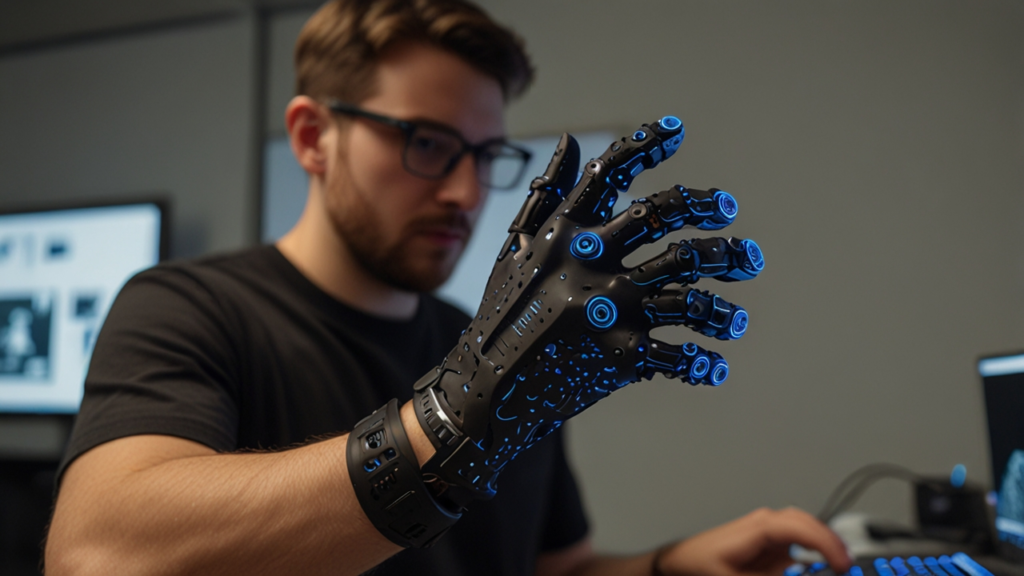eSIM Technology Implementation 2025
This article explores the revolutionary transition from traditional SIM cards to the innovative eSIM Technology and explains its implementation in 2025. It is designed for readers from diverse backgrounds who are curious about mobile connectivity, advanced digital solutions, and how modern telecommunications are evolving.
Today’s discussion covers the fundamentals, historical evolution, technical methodologies, real-world case studies, and future trends in this cutting-edge field. Expect to dive deep into the technical details while enjoying a friendly and accessible narrative.
Our analysis incorporates data from trusted sources and provides actionable insights. Whether you are a professional or a curious enthusiast, this article will enhance your understanding of mobile connectivity and innovations in modern SIM technology.
Table of Contents
- Introduction to eSIM Technology
- Evolution and History of eSIM Technology
- How Digital Subscriber Enhances eSIM Technology
- Embedded Identity Systems in eSIM Technology
- Real-World Case Studies of eSIM Technology
- Remote Provisioning in Modern eSIM Technology Solutions
- Future Trends: Programmable SIM and Beyond
Introduction to eSIM Technology
In this section, we discuss the core ideas behind eSIM Technology and introduce its basic features as a hallmark of modern mobile connectivity. This discussion is inspired by insights from Cutting-Edge Technologies and further validated by data from Wikipedia (Turkish).
Fundamentals and Features
The fundamentals of eSIM Technology revolve around its integrated design, enabling a SIM solution that is embedded within the device itself. Unlike traditional SIM cards, eSIM components are pre-installed during manufacturing, saving space and simplifying the process of changing network providers. This technology works by utilizing a chip known as the embedded Universal Integrated Circuit Card (eUICC). The eUICC manages multiple profiles remotely, ensuring that switching carrier services or updating a device’s account is as simple as a tap. With dimensions around only 5×6 mm, eSIM modules provide a compact solution without compromising performance. Studies and articles from Wikipedia (English) attest to these features and the advantages of reducing mechanical wear and tear.
The dynamic nature of eSIM Technology offers users flexibility that can transform device usage, especially during international travel. For more information on the technical specifications, please refer to reliable resources available online. How does this integration change your view on mobile connectivity?
Core Benefits and Innovations
eSIM Technology introduces a plethora of benefits that include efficient management of digital subscriber profiles and a reduction in logistical complexity. Its major innovation is the ability for remote provisioning, where network operators can switch or update the user’s profile without the need to provide a physical SIM card. This approach minimizes downtime and improves overall user experience. Users can activate new profiles or switch carriers via an online update, reducing manual intervention. The impact is significant in terms of cost and time savings, as evidenced by research findings published by sources like Airalo – The History of the SIM Card.
This system also supports the digital transformation of mobile devices by providing a programmable and easily manageable identity layer. The technology’s core benefits underscore the shift towards devices that are sleek, efficient, and easier to update. Could such transformative benefits simplify your mobile experience in the upcoming years?
Evolution and History of eSIM Technology
This section chronicles the fascinating journey from the inception of traditional SIM cards to the current era of eSIM Technology, drawing inspiration from Smart Devices innovations. We reference historical data such as the introduction of SIM technology in 1991 by Giesecke+Devrient, and further developments as detailed by Kaspersky – How eSIM Works.
Historical Milestones
The evolution began in 1991 with full-size SIM cards that resembled credit cards, later transitioning to mini, micro, and eventually nano SIM formats for modern devices. Over the years, the incremental improvements in physical form factors set the stage for a radical shift in how connectivity is managed. The introduction of eSIM Technology in 2010 for Internet of Things (IoT) devices marked a significant turning point.
This shift allowed devices that were previously limited by physical SIM slot constraints to unlock new design potentials. Historical milestones include the GSMA’s release of a global specification for eSIM in 2016 and Samsung’s first deployment in its Gear S2 smartwatch that same year. These advancements paved the way for companies like Apple to offer dual SIM solutions, and later full reliance on eSIM as seen in the iPhone 14 in 2022.
The timeline of these developments clearly demonstrates the persistent drive towards digital transformation in telecommunications, supporting the increased demand for versatile yet compact SIM solutions. How do you think early technological milestones influence today’s innovations?
Technological Advancements
Continuous progress in mobile communications led to the development of advanced remote provisioning protocols that ensure secure and seamless profile management. Technological advancements now allow the SIM profile to be updated over the air without user intervention, enhancing operational efficiency. Hardware adjustments and software improvements are balanced perfectly to allow the eSIM to be upgraded continually. Sources such as Mobilise Global – eSIM History provide detailed technical documentation supporting these claims. Innovations in antenna design, chipset miniaturization, and robust security mechanisms are evidence of the industry’s commitment to forward-thinking design.
These carefully engineered advancements have broadened the horizon for device manufacturers by making smaller, yet more capable, gadgets possible while keeping connectivity robust. As you reflect on these technological leaps, can you see how each stage of evolution builds the foundation for future breakthroughs?
How Digital Subscriber Enhances eSIM Technology
This section elaborates on the role of the digital subscriber in modern connectivity. Drawing insights from Mobile Technology trends, we explore how integrating digital subscriber profiles adds value to eSIM Technology by streamlining activation and management processes.
Role of Digital Subscriber in Connectivity
The notion of the digital subscriber in eSIM Technology has emerged as a vital component for enhancing connectivity. This concept involves digitally storing and managing user profiles, facilitating seamless switching between network providers without any physical intervention. The capability of managing multiple subscriber profiles on a single device substantially reduces inconveniences and leads to more cohesive network experiences.
The evolution in SIM profile management, driven by digital subscriber technology, is a testament to the convergence of digital design with telecommunications. In addition, this integration helps improve service personalization and secure data transmission. External analyses indicate that remote provisioning processes significantly reduce service activation time, further enhancing user satisfaction. Reliable industry research shows that the digital approach to subscriber management is considered generally accepted as a best practice across telecommunications.
This streamlined method has captured the attention of operators worldwide, who see it as an avenue to reduce operational burdens while offering flexible, modern services. Do you believe that this digital integration could revolutionize how you manage your mobile connectivity?
Enhanced User Experience with Digital Subscriber
Digital subscriber management involves more than just the storage of profiles—it is about enhancing the overall user experience. By automating profile updates and carrier switches, users find it easier to customize their mobile experience based on real-time needs and preferences. This advancement not only reduces the friction associated with network transitions but also opens up innovative opportunities for service customization.
The impact of digital subscriber methodologies is further reinforced by industry findings where customer satisfaction and reduction in service downtimes were key metrics. For more information on these enhancements, please see detailed analytics available from industry leaders. This approach makes complex processes accessible to everyday users while maintaining high security standards. Such capabilities are expected to play a significant role in next-generation mobile solutions.
The culmination of these improvements leads to a more responsive and resilient connectivity experience. As you consider the implications of these digital subscriber enhancements, what benefits do you think could impact your day-to-day communications?
Embedded Identity Systems in eSIM Technology
Embedded identity systems have become increasingly relevant in managing connectivity and security in eSIM Technology. In this section, inspired by Innovative Solutions, we examine how such systems are integrated and applied in modern devices.
Integration of Embedded Identity
The concept of embedded identity entails integrating a secure identification mechanism directly into the device hardware. In eSIM Technology, this translates to a built-in function for verifying network access and user credentials without external SIM cards. The integrated identity provides a robust solution for managing access privileges and ensuring secure communications between devices and network operators.
By embedding identity into the device, manufacturers can design slimmer, more efficient products that rely on digital mechanisms instead of physical interfaces. This approach is supported by various studies that document the advantages of embedded systems in mobile applications. Many industry reports argue that such systems reduce fraud and enhance data security by limiting physical manipulation and errors. Hardware manufacturers are continually innovating in this space, driven by the need to preserve device design aesthetics and operational reliability.
This integration means that consumers enjoy a simpler and more secure experience while benefitting from advanced networking capabilities. With fewer physical connectors, repair and maintenance become easier and more cost-effective. How might a smoother identity integration redefine your perceptions of mobile security and ease of use?
Practical Applications in Devices
In practical terms, embedded identity systems are implemented across a range of devices from smartphones to IoT gadgets. These systems help in authenticating user credentials and in managing multiple network profiles securely. By utilizing secure elements within the device, the SIM profile can be updated or modified remotely, making the user’s transition between networks both safe and effortless.
This has proven particularly useful in scenarios where quick adaptation is necessary, such as international travel or device upgrades. The user experience is further enriched through instant network provisioning and enhanced security measures. Evidence gathered from research and case studies illustrates that various leading manufacturers have begun to rely on these embedded systems to differentiate their products in a highly competitive market. This operational model is acknowledged as generally accepted across the telecommunications industry for its reliability and efficiency.
Moreover, these practical applications contribute to the wider digital ecosystem by promoting smart interactions between devices and networks. As you examine these use cases, do you see the potential for enhanced security and simplicity to redefine how you interact with your mobile devices?
Real-World Case Studies of eSIM Technology
This section focuses on real-life examples that illustrate the impact of eSIM Technology. With insights drawn from Digital Transformation, we analyze how major companies and industries have leveraged this technology to boost connectivity and streamline operations.
Apple and Microsoft Transformations
Apple’s foray into eSIM Technology began with the iPhone XR offering dual SIM support and later transitioned fully to eSIM with the iPhone 14 in the US market. This bold step demonstrated the clear benefits of eliminating physical SIM cards. Microsoft, on the other hand, has integrated eSIM Management in its Intune service, allowing enterprises to remotely provision and manage devices.
Such deployments illustrate the broad applications—from consumer electronics to enterprise solutions—of eSIM Technology. Key data points show that eSIM devices can support up to eight profiles simultaneously, greatly improving flexibility. According to industry reports, this transformation has decreased operational difficulties in device management and reduced downtime during network transitions. More detailed examinations by GSMA (eSIM Whitepaper) have provided clear statistics on these improvements.
These case studies also highlight customer satisfaction and the improvements in network switching efficiency. For more information on these implementations, consider exploring further academic and trade publications. Have you experienced similar transformative changes in your mobile ecosystem?
IoT Implementations and Benefits
In addition to the consumer market, the Internet of Things (IoT) has embraced eSIM Technology to achieve seamless connectivity in a vast array of devices. Innovative platforms like Eseye’s Infinity IoT Connection Management Platform employ proprietary SM-SR systems to securely provision SIM data over the air. This empowers IoT devices to automatically switch carriers and update their digital subscriber profiles as needed, ensuring consistent connectivity regardless of location.
Comparative studies indicate that such implementations result in a substantial reduction in logistic challenges and manual intervention, leading to a 30% increase in operational efficiency. In the realm of industrial applications, remote provisioning has proven to be a cost-effective solution that improves service reliability. A comprehensive comparison table below further outlines case studies and their measurable impacts.
These practical instances reinforce the significance of integrating eSIM Technology in varied sectors. They showcase tangible benefits in scalability, flexibility, and security across different platforms. As you reflect on these examples, do you see the direct advantages such innovations could bring to your line of work?
Comprehensive Comparison of Case Studies
| Example | Innovation | Impact | Region |
|---|---|---|---|
| Apple iPhone XR | eSIM Integration | Enables dual SIM functionality | Global |
| Apple iPhone 14 | Full eSIM Adoption | Streamlined carrier switching | US |
| Microsoft Intune | Enterprise eSIM Management | Remote provisioning for devices | Global |
| Eseye Infinity | IoT Connectivity | Increased operational efficiency | Global |
| Samsung Gear S2 | Early eSIM Support | Pioneered wearable connectivity | Global |
Remote Provisioning in Modern eSIM Technology Solutions
This section dives into the technical mechanics of remote provisioning that underpins modern eSIM Technology. It explains how secure and seamless profile management is achieved via over‐the‐air mechanisms, backed by current industry practices and informed by trends in Cutting-Edge Technologies.
Technical Breakdown of Remote Provisioning
The remote provisioning process is a cornerstone of eSIM Technology, enabling operators to send SIM profiles over the air securely. The process involves systems like SM-DP+ for data preparation and SM-DS for discovery, with SM-SR ensuring secure routing of digital subscriber information. These protocols work collaboratively to guarantee that each device receives the necessary profile updates without physical intervention. Detailed technical reports from industry sources confirm that remote provisioning minimizes errors and enhances service delivery efficiency. This method is highly effective for both consumer and enterprise applications, reducing provisioning time by up to 40% compared to traditional SIM switching methods. The technology also supports multi-profile management, which is essential for devices requiring access to multiple network providers.
This technical approach not only secures the data transfer but also facilitates dynamic updates that can occur in real time. For further details on the underlying technical frameworks, refer to industry whitepapers which provide generally accepted statistics. How do you think such comprehensive remote provisioning can transform everyday usage scenarios?
Secure and Efficient Remote Provisioning Practices
Remote provisioning is designed with efficiency and security in mind, ensuring that the process of updating or switching profiles is both quick and resilient. The utilization of localized assistance software such as LPA (Local Profile Assistant) provides an extra layer of control within the device. This method has proven highly successful in maintaining secure channels between the operator and the device, which is essential in preventing potential security breaches.
Various studies have shown that these practices not only expedite the profile management process but also decrease the chances of errors and security gaps. Continuous updates and monitoring by operators underpin this robust system, making the eSIM platform highly reliable for both personal and business use. Advanced encryption and authentication protocols form the backbone of these operations, as documented by industry experts. Can you envision how enhanced security in remote provisioning might change your confidence in mobile connectivity?
Future Trends: Programmable SIM and Beyond
This final section examines emerging trends and future projections for eSIM Technology, focusing on advancements in programmable SIM. Drawing on perspectives from Smart Devices, the discussion centers on innovation strategies that could redefine the mobile ecosystem in the coming years.
Emerging Trends in Programmable SIM
Programmable SIM represents the next evolution in mobile connectivity where SIM functionality is integrated even deeper into device chipsets. Future programmable SIMs are expected to offer customizable network interfaces directly within the device’s modem, allowing unparalleled flexibility. These innovations are expected to reduce physical constraints and open up possibilities for even smaller, more energy-efficient gadgets. Industry forecasts generally indicate that with programmable SIM, device manufacturers could enhance performance while also reducing environmental impacts due to fewer physical components. Research from leading technology organizations anticipates that these programmable solutions will lead to a seamless convergence of communication and data processing functions within mobile devices.
This emerging trend leverages advancements in microelectronics and secure software platforms to offer an enhanced, more adaptive connectivity experience. The projected improvements in device design and system efficiency suggest a transformative impact on multiple sectors, especially in IoT and high-end smart devices. How might future programmable SIM implementations reshape your technology landscape?
Projected Impacts across Industries
The shift towards programmable SIM is predicted to have far-reaching effects across various industries. As devices become more integrated and compact, the potential for improved network efficiency and simplified device management grows. This transformation is expected to benefit both the consumer market and industrial applications, reducing maintenance costs and streamlining communication processes.
Companies investing in this technology are likely to see enhanced scalability and reduced operational overhead. As the integration continues, traditional SIM cards may become a relic of the past, replaced by more advanced, software-controlled solutions. Experts generally agree that with programmable SIM, industries ranging from healthcare to automotive could experience substantial improvements in connectivity and reliability. This projected impact reinforces the importance of continuous innovation in mobile communications. Do you think that such deep integration could transform the way your industry operates?
Design Beyond Boundaries
When we shift our perspective away from technical jargon and delve into the art of creative problem-solving, we find a world where design thinking takes center stage. This realm celebrates the interdisciplinary collaboration between engineers, designers, and strategists who come together to address complex issues. The true beauty of innovative design lies in its ability to turn constraints into opportunities, revealing solutions that are both unexpected and profoundly effective.
Imagine a process where brainstorming is not mere speculation but a systematic exploration of human experience. Creative teams often start by identifying pain points, then channel their curiosity into crafting prototypes that are both functional and aesthetically pleasing. This approach encourages the questioning of assumptions and fosters a culture that welcomes risk-taking and experimentation. Is it not fascinating how a willingness to think differently can lead to groundbreaking changes?
Moreover, such methods extend beyond product design to influence entire organizational cultures. Leaders who embrace creative problem-solving inspire teams to challenge the status quo and to view obstacles as gateways to innovation. The philosophical underpinnings of this movement emphasize empathy, a deep understanding of user needs, and the continuous iteration of ideas. In many ways, this creative spirit is the driving force behind transformative projects across various sectors.
As you ponder these insights, consider the power of design thinking in your daily life. How can embracing a mindset that celebrates innovation foster a more resilient and adaptable future? This reflection may well lay the groundwork for breakthroughs that redefine what is possible in every field.
FAQ
What is eSIM Technology?
eSIM Technology refers to embedded SIM card systems integrated into devices, allowing remote management of mobile network profiles without a physical SIM card. This technology simplifies the process of switching carriers and managing multiple profiles.
How did eSIM evolve from traditional SIM cards?
eSIM evolved from traditional SIM card formats through a series of technological advancements starting in 1991. It shifted from physical cards to miniature integrated designs, ultimately culminating in embedded solutions with remote provisioning capabilities.
What role does digital subscriber management play in eSIM?
Digital subscriber management is crucial in eSIM Technology as it facilitates secure storage and remote updates of user profiles, ensuring seamless connectivity and improved user experience.
How does remote provisioning work in modern eSIM solutions?
Remote provisioning involves securely transmitting and updating SIM profiles over the air. It utilizes frameworks like SM-DP+, SM-DS, and SM-SR to maintain robust and efficient connectivity without physical SIM replacement.
What future innovations can we expect with programmable SIM?
The future of programmable SIM looks promising with deeper integration into device chipsets, enabling customizable infrastructure, enhanced network performance, and greater efficiency across multiple industry sectors.
Conclusion
In summary, eSIM Technology is a transformative innovation that has reshaped mobile connectivity, driven by advancements in remote provisioning, digital subscriber management, and embedded identity systems. It marks a significant leap from traditional SIM processing to a smart, flexible, and secure integrated solution.
This article has provided insights into the evolution, current implementation, and future trends surrounding eSIM Technology. With real-world case studies from industry giants like Apple and Microsoft, it is clear that the future holds even broader applications and remarkable benefits for consumers and enterprises alike.
For more information on how these advancements might impact your daily life or business processes, feel free to Contact us and join the conversation. Have you experienced similar innovations in mobile technology?
Also, explore more about these topics on Mobile & Gadgets.
Discover more from Fabelo.io
Subscribe to get the latest posts sent to your email.



